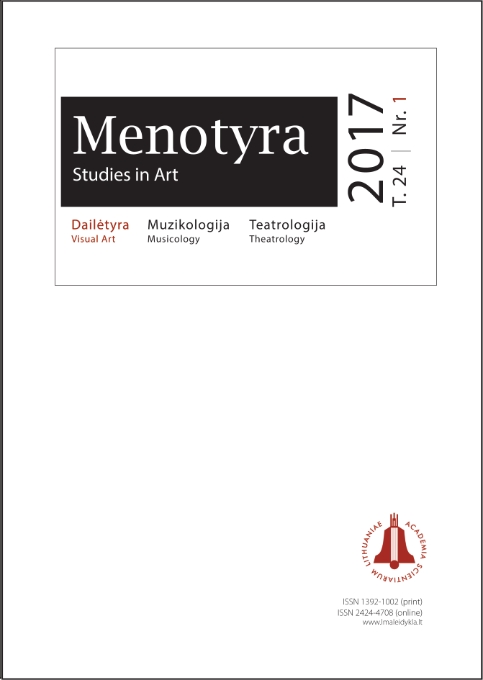Didžiosios savaitės inscenizacija Švėkšnos bažnyčioje XVIII a. II pusėje – XIX a. I pusėje
The dramatization of the Holy Week in Švėkšna church in the first half of the 19th century
Author(s): Asta GiniūnienėSubject(s): Christian Theology and Religion, Cultural history, Visual Arts, 19th Century
Published by: Lietuvos mokslų akademijos leidykla
Keywords: Švėkšna church; Paschal decoration; Christ’s tomb; baroque scenery; late baroque painting; iconography of the Old Testamentč
Summary/Abstract: The article for the first time analyses the decoration parts of the Christ’s tomb of the second half of the 18th century found a few years ago in Švėkšna church. The Christ’s tomb from the old church was transferred to the new church, which was built in 1804 and used until the 4th decade of the 19th century. On the basis of the sources and remained fragments we can state that this was a complicated structure of the Paschal decoration designed under the European baroque scenery principles. It was composed of the paintings on boards and canvas and miscellaneous accessories. The Christ’s tomb paintings are characterised by a symbolic allegoric content and artistry. The prophets of the Old Testament and characters the New Testament reflecting the Paschal Triduum liturgy were depicted in the decoration. The survived outline paintings of Adam and Eve in Paradise, Noah waiting for the Saviour, and Angels Lamenting over the Death of Jesus are the exceptional iconography images in the Lithuanian church art. The decorations of the Christ’s tomb were created by the professional masters who decorated the churches in Samogitia in the second part of the 18th century. The images of suffering and dead Jesus used in the figuration of the Paschal Triduum influenced the spread of the Passion scenes. This is supported by an interesting archival fact about the shrine with a group of sculptures depicting the tomb of Christ in the Švėkšna churchyard.The fragments of the Paschal decorations in the Švėkšna church are important baroque scenery exhibits, which are valuable for the history of the Lithuanian church art and scenography. The investigation of the Holy Week figuration in the Švėkšna church is a valuable illustration of this multidimensional cultural, religious and artistic phenomenon.
Journal: Menotyra
- Issue Year: 24/2017
- Issue No: 1
- Page Range: 17-36
- Page Count: 20
- Language: Lithuanian

